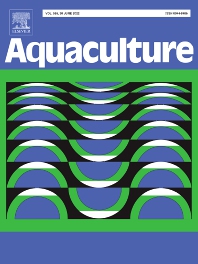
R.Joshi, A.Skaarud, M.de Vera, A.T.Alvarez, J.Ødegård
Aquaculture, Volume 516, 1 February 2020, 734641
Abstract
Background
Over the past three decades, Nile tilapia industry has grown into a significant aquaculture industry spread over 120 tropical and sub-tropical countries around the world accounting for 7.4% of global aquaculture production in 2015. Across species, genomic selection has been shown to increase predictive ability and genetic gain, also extending into aquaculture. Hence, the aim of this paper is to compare the predictive abilities of pedigree- and genomic-based models in univariate and multivariate approaches, with the aim to utilise genomic selection in a Nile tilapia breeding program. A total of 1444 fish were genotyped (48,960 SNP loci) and phenotyped for body weight at harvest (BW), fillet weight (FW) and fillet yield (FY). The pedigree-based analysis utilized a deep pedigree, including 14 generations. Estimated breeding values (EBVs and GEBVs) were obtained with traditional pedigree-based (PBLUP) and genomic (GBLUP) models, using both univariate and multivariate approaches. Prediction accuracy and bias were evaluated using 5 replicates of 10-fold cross-validation with three different cross-validation approaches. Further, impact of these models and approaches on the genetic evaluation was assessed based on the ranking of the selection candidates.
Results
GBLUP univariate models were found to increase the prediction accuracy and reduce bias of prediction compared to other PBLUP and multivariate approaches. Relative to pedigree-based models, prediction accuracy increased by ~20% for FY, >75% for FW and >43% for BW. GBLUP models caused major re-ranking of the selection candidates. Within GBLUP models, there was no significant difference between rankings produced by univariate and multivariate approaches. The heritabilities using multivariate GBLUP models for BW, FW and FY were 0.19 ± 0.04, 0.17 ± 0.04 and 0.23 ± 0.04 respectively. BW showed very high genetic correlation with FW (0.96 ± 0.01) and a slightly negative genetic correlation with FY (−0.11 ± 0.15).
Conclusion
Predictive ability of genomic prediction models is substantially higher than for classical pedigree-based models. Genomic selection is therefore beneficial to the Nile tilapia breeding program, and it is recommended in routine genetic evaluations of commercial traits in the Nile tilapia breeding nucleus.
